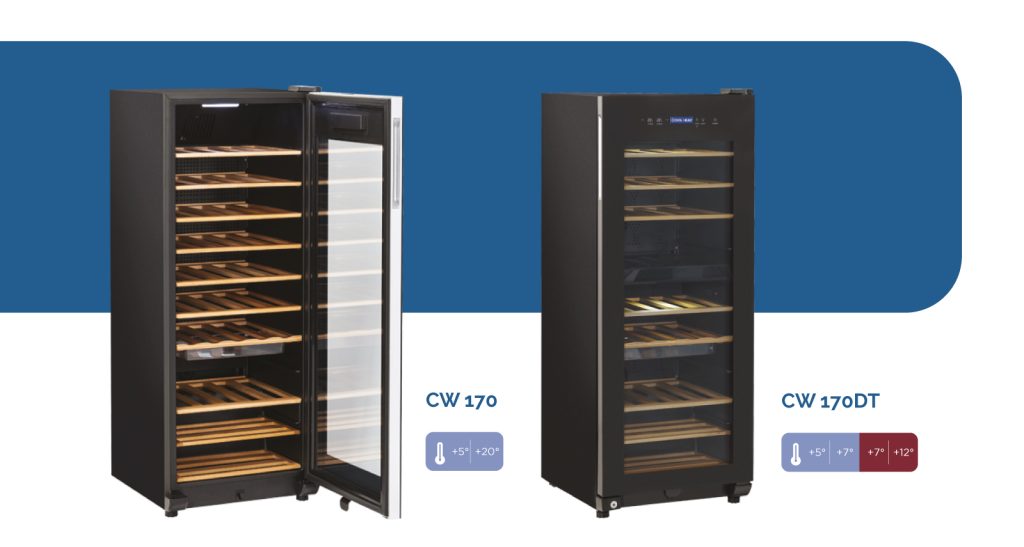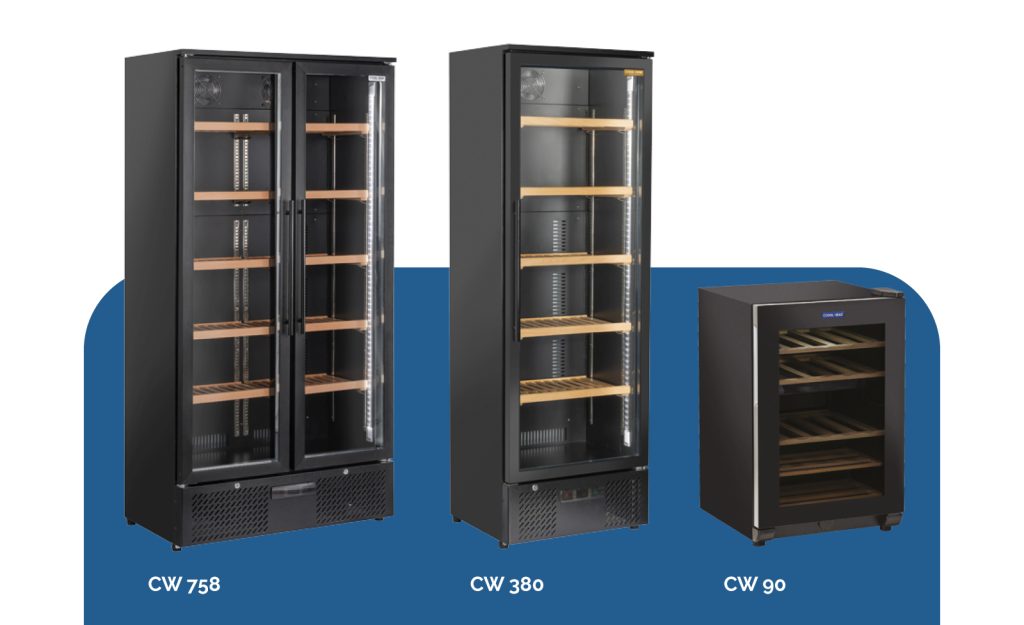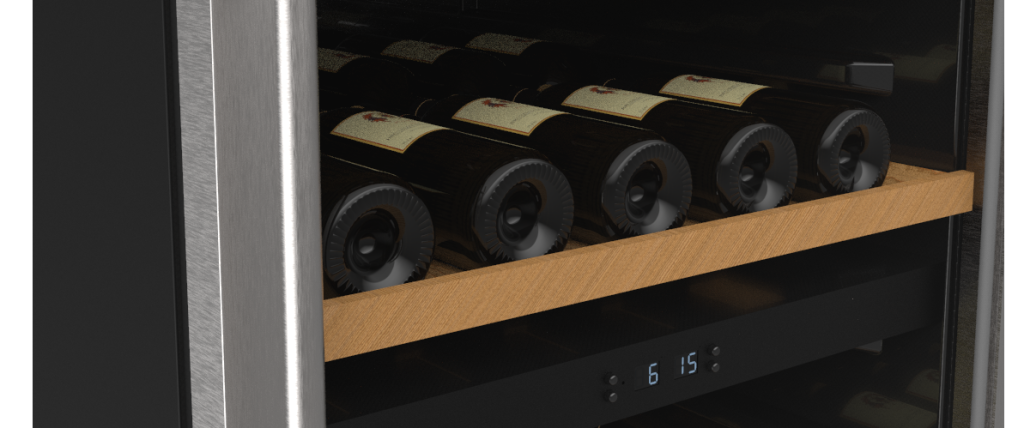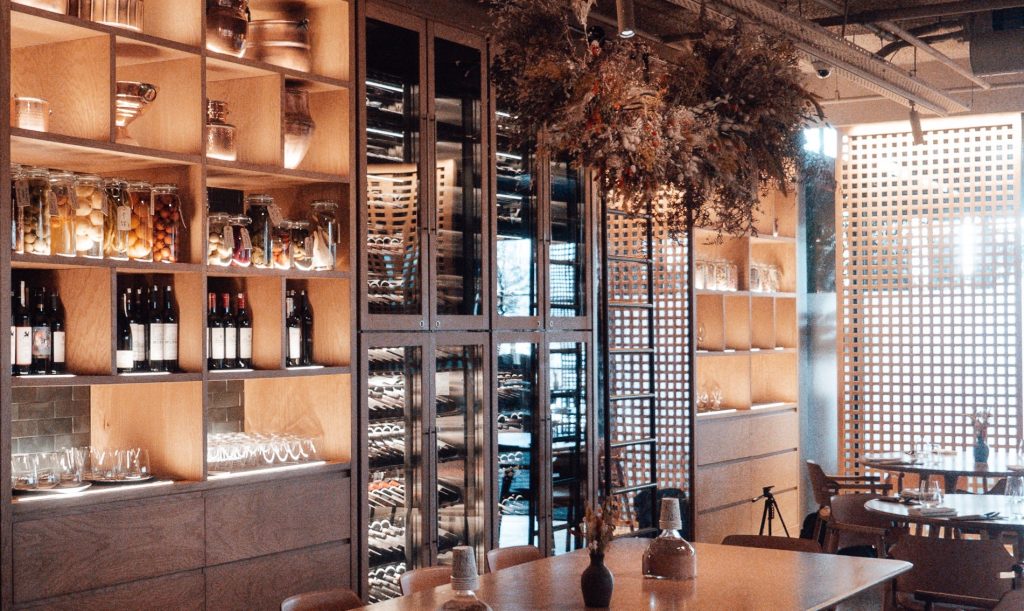The taste of wine depends on several factors, but one of the most important is undoubtedly serving temperature. That is why it is essential to have a good wine cabinet to store bottles. And what is the ideal temperature for each type of wine?
As you may know, there are many types of wine and each one has different characteristics (sweetness, acidity, tannins, etc.). These characteristics are enhanced or diminished depending on the temperature at which they are served.
How to store wine in a wine cabinet
What types of wine cabinets are there, and which one is right for your needs? When purchasing a wine cabinet, different options should be considered depending on the intended use. According to the number of temperature zones, there are two main types of wine cabinets: mono-temperature and bi-temperature.

Mono-temperature cabinets, as their name suggests, keep contents at one constant, uniform temperature throughout. Bi-temperature cabinets, on the other hand, are distinguished by the fact that they have separate areas with different temperatures. This allows you to store wines that need to be kept at different temperatures.
Additionally, cabinets come in various sizes and capacities, both for small spaces and large hotels or restaurants, such as the CW series.

Red wine
Red wine is one of the most delicate in terms of storage, especially once it has been opened. The ideal storage temperature is between 12 ∞C and 18 ∞C. How many days do you have to finish it? On average, a freshly opened bottle of red wine will keep well for 3 to 5 days, although the more tannins the wine has, the longer the bottle will last open.
White wine and rosé
In terms of storage, white wine is quite different from red. It can be chilled, and the ideal temperature is between 8 ∞C and 12 ∞C. For sparkling wines like cava or champagne, the optimal temperature is from 5 ∞C to 10 ∞C.
Rosé wine is similar to white. It is best kept at roughly 10 °C.
Lower temperatures bring out the bubbles, sweetness, and acidity. White and rosé wines last up to 3 days after being opened.
How to protect wine from light
Apart from the temperature factor, too much light can damage the properties of the wine. Leaving a bottle in direct sunlight not only causes the wine to heat up, but also accelerates chemical reactions that could spoil it. This is why cabinets are fitted with tinted glass to keep out the light.
The perfect humidity for storing wine
Humidity is also a key factor, and it is important to find the right level. Both too much and too little humidity will affect the final experience of the wine when it is served. Lack of humidity will cause the corks to dry out, letting oxygen into the bottle. Excessive humidity can lead to mould on the cork, damaging the wine.
Therefore, the place chosen for storage must be cool with relative humidity between 70% and 80% so that the cork does not dry out or become too damp.
How to store wine bottles: vertical or horizontal?
Finally, the million-dollar question: vertical or horizontal? Wine bottles should never be moved abruptly. If the wine is to be consumed immediately, within a few days or weeks, it should be stored standing up. And if we want to keep it for another day? Winemakers and professionals in the sector agree that bottles should be laid on their side, so the wine remains in contact with the cork, with enough space between them that one bottle can be handled without disrupting the others.



